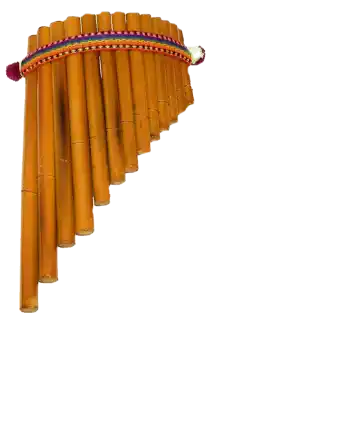Celebrating the Quirky and Unusual
When it comes to music, we often think of the familiar sounds of guitars, pianos, and drums. But there’s a whole world of quirky, unusual, and downright bizarre instruments that deserve their moment in the spotlight. That’s where Uncommon Instrument Awareness Day comes in! Celebrated annually on July 31st, this day is dedicated to appreciating and recognizing the musical contributions of these unconventional instruments.
The Origins of Uncommon Instrument Awareness Day
Uncommon Instrument Awareness Day was created by a group of passionate music enthusiasts who saw a need to celebrate the vast diversity within the world of musical instruments. The exact origins are somewhat murky, much like the unique sounds these instruments produce, but it is believed to have been started in the early 2000s by a collective of musicians, educators, and instrument makers. Their goal was to bring attention to the incredible variety of instruments that exist beyond the mainstream and to encourage a broader appreciation of musical innovation.
The day was chosen to fall on July 31st, strategically placed in the middle of summer when music festivals, cultural events, and gatherings are in full swing. This timing allows for outdoor celebrations, workshops, and performances that can showcase these unusual instruments in all their glory.
The creators of Uncommon Instrument Awareness Day aimed to foster a sense of curiosity and wonder about music, inspiring both musicians and listeners to explore beyond the conventional. They believed that by highlighting these unique instruments, they could also preserve the rich cultural histories and traditions associated with them. Over the years, the day has grown in popularity, with musicians and music lovers around the world participating in events, sharing information online, and discovering new sounds that they might never have encountered otherwise.
 From local community centers hosting workshops on how to play the didgeridoo to online streaming concerts featuring the eerie melodies of the theremin, Uncommon Instrument Awareness Day has become a global celebration of musical diversity and creativity. This day not only educates people about the wide array of musical instruments but also inspires a deeper appreciation for the art of music-making in all its forms.
From local community centers hosting workshops on how to play the didgeridoo to online streaming concerts featuring the eerie melodies of the theremin, Uncommon Instrument Awareness Day has become a global celebration of musical diversity and creativity. This day not only educates people about the wide array of musical instruments but also inspires a deeper appreciation for the art of music-making in all its forms.
Why Celebrate Uncommon Instruments?
While the piano and violin are undoubtedly beautiful, there's something magical about the unique sounds produced by lesser-known instruments. These oddball instruments often come with fascinating histories, inventive designs, and sounds that can surprise and delight even the most seasoned music lovers. Uncommon Instrument Awareness Day is a chance to celebrate this musical diversity and to remind us that music knows no bounds.
Meet Some Uncommon Instruments
To truly appreciate Uncommon Instrument Awareness Day, let’s take a closer look at some of the fascinating instruments that make up this quirky orchestra:
-
Theremin: Invented in 1920 by Leon Theremin, this instrument is played without physical contact. Musicians control the pitch and volume by moving their hands near two metal antennas, producing eerie, otherworldly sounds that have been used in sci-fi movie soundtracks.
-
Glass Harmonica: This delicate instrument, invented by Benjamin Franklin, consists of a series of glass bowls or goblets of different sizes mounted on a spindle. Players produce hauntingly beautiful sounds by rubbing their fingers along the rims.
-
Didgeridoo: An ancient wind instrument developed by Indigenous Australians, the didgeridoo produces a deep, resonant drone. It’s made from a hollowed-out tree trunk and is played by vibrating the lips and using circular breathing.
-
Hang Drum: Resembling a UFO, the hang drum is a relatively new percussion instrument invented in Switzerland in the early 2000s. It’s played with the hands and produces soothing, melodic tones that have gained a following among street musicians and meditators.
-
Nyckelharpa: This traditional Swedish instrument looks like a violin with keys. The nyckelharpa, or key harp, dates back to the Middle Ages and combines elements of string and keyboard instruments, producing a rich, resonant sound.
Why Uncommon Instruments Deserve Our Love
Uncommon instruments bring a unique flavor to music that more mainstream instruments can’t replicate. They challenge our ears and our perceptions of what music can be. Here are a few reasons why these instruments deserve our admiration:
- Unique Sounds: Uncommon instruments often produce sounds that are entirely new to us, expanding our auditory horizons and adding richness to the musical tapestry.
- Cultural Significance: Many uncommon instruments have deep cultural roots and tell stories of the people and places they come from.
- Inventiveness: The creativity and ingenuity involved in designing and playing these instruments are truly remarkable.
- Fun Factor: Let’s face it, playing a theremin or a didgeridoo just looks incredibly cool and can be a fun party trick.
How to Celebrate Uncommon Instrument Awareness Day
Ready to join the celebration? Here are a few ways to get involved and show your love for uncommon instruments:
- Learn About an Uncommon Instrument: Take some time to research an uncommon instrument. Watch videos of it being played, learn about its history, and listen to music that features it.
- Try Playing One: If you can get your hands on an uncommon instrument, give it a try! Many music stores and cultural centers have instruments available for rent or demonstration.
- Attend a Performance: Look for local concerts or performances featuring uncommon instruments. Many world music ensembles and avant-garde groups incorporate these unique sounds.
- Share Your Experience: Use social media to share your newfound knowledge and appreciation for uncommon instruments. Post videos, fun facts, and your thoughts on why these instruments are worth celebrating.
Uncommon Instrument Awareness Day is a reminder that music is a vast and diverse art form, full of surprises and innovations. By celebrating the unusual and the extraordinary, we not only honor the rich tapestry of global musical traditions but also inspire a sense of curiosity and creativity in ourselves. So, let's tune up our theremins, polish our glass harmonicas, and celebrate the marvelous world of uncommon instruments!
Please Share our Content






 From local community centers hosting workshops on how to play the didgeridoo to online streaming concerts featuring the eerie melodies of the theremin, Uncommon Instrument Awareness Day has become a global celebration of musical diversity and creativity. This day not only educates people about the wide array of musical instruments but also inspires a deeper appreciation for the art of music-making in all its forms.
From local community centers hosting workshops on how to play the didgeridoo to online streaming concerts featuring the eerie melodies of the theremin, Uncommon Instrument Awareness Day has become a global celebration of musical diversity and creativity. This day not only educates people about the wide array of musical instruments but also inspires a deeper appreciation for the art of music-making in all its forms.








 "Sláinte!" is a traditional Irish expression used as a toast, equivalent to "Cheers!" in English.
"Sláinte!" is a traditional Irish expression used as a toast, equivalent to "Cheers!" in English.